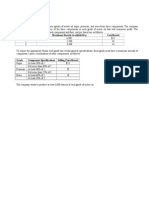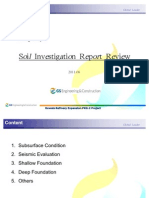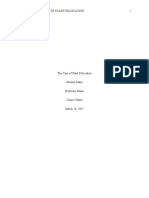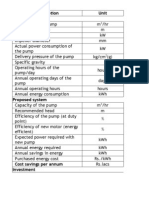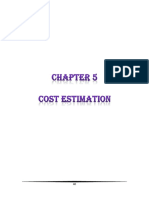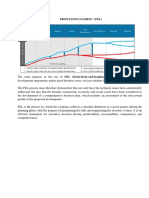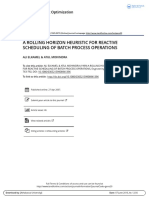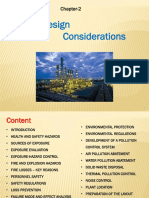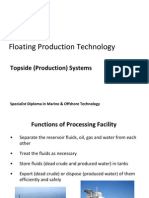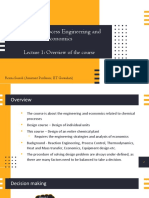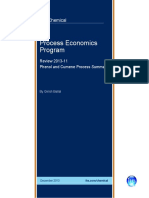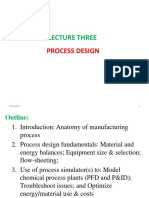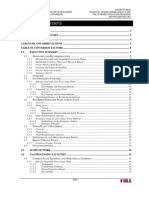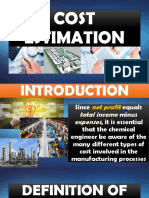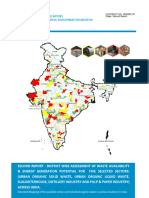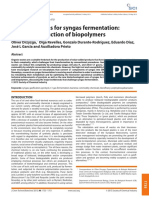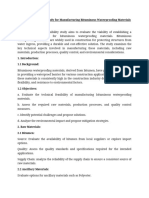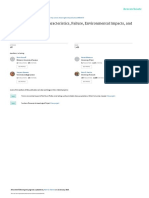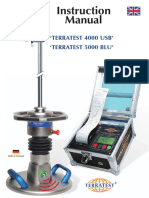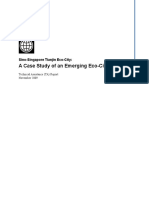0% found this document useful (0 votes)
117 views17 pagesProcess Ecnomics
The document discusses process economics and economic evaluation of chemical processes. It covers the costs of chemical process projects including capital investment and operating costs. It also discusses evaluating the revenue and profits of chemical processes. Several economic evaluation techniques are mentioned like net present value, internal rate of return, and payback period. The document provides details on evaluating both new chemical process plants and modifications to existing plants.
Uploaded by
Faris AhmedCopyright
© © All Rights Reserved
We take content rights seriously. If you suspect this is your content, claim it here.
Available Formats
Download as PPTX, PDF, TXT or read online on Scribd
0% found this document useful (0 votes)
117 views17 pagesProcess Ecnomics
The document discusses process economics and economic evaluation of chemical processes. It covers the costs of chemical process projects including capital investment and operating costs. It also discusses evaluating the revenue and profits of chemical processes. Several economic evaluation techniques are mentioned like net present value, internal rate of return, and payback period. The document provides details on evaluating both new chemical process plants and modifications to existing plants.
Uploaded by
Faris AhmedCopyright
© © All Rights Reserved
We take content rights seriously. If you suspect this is your content, claim it here.
Available Formats
Download as PPTX, PDF, TXT or read online on Scribd
/ 17


